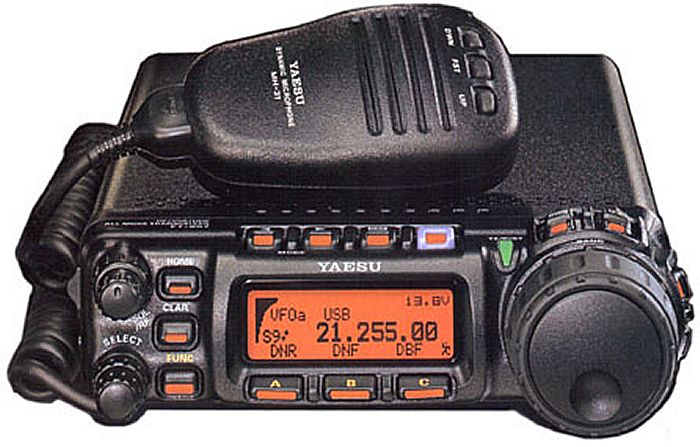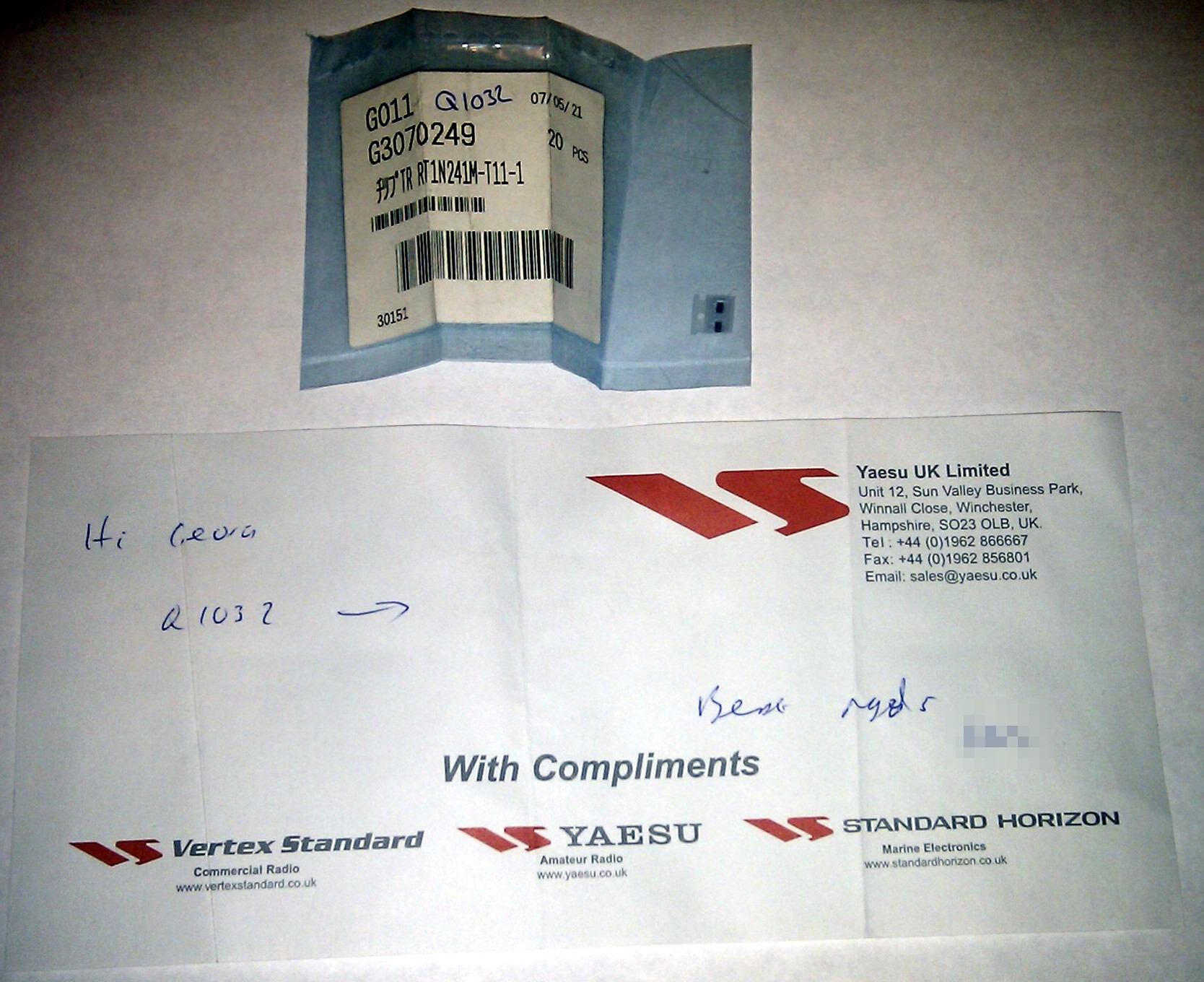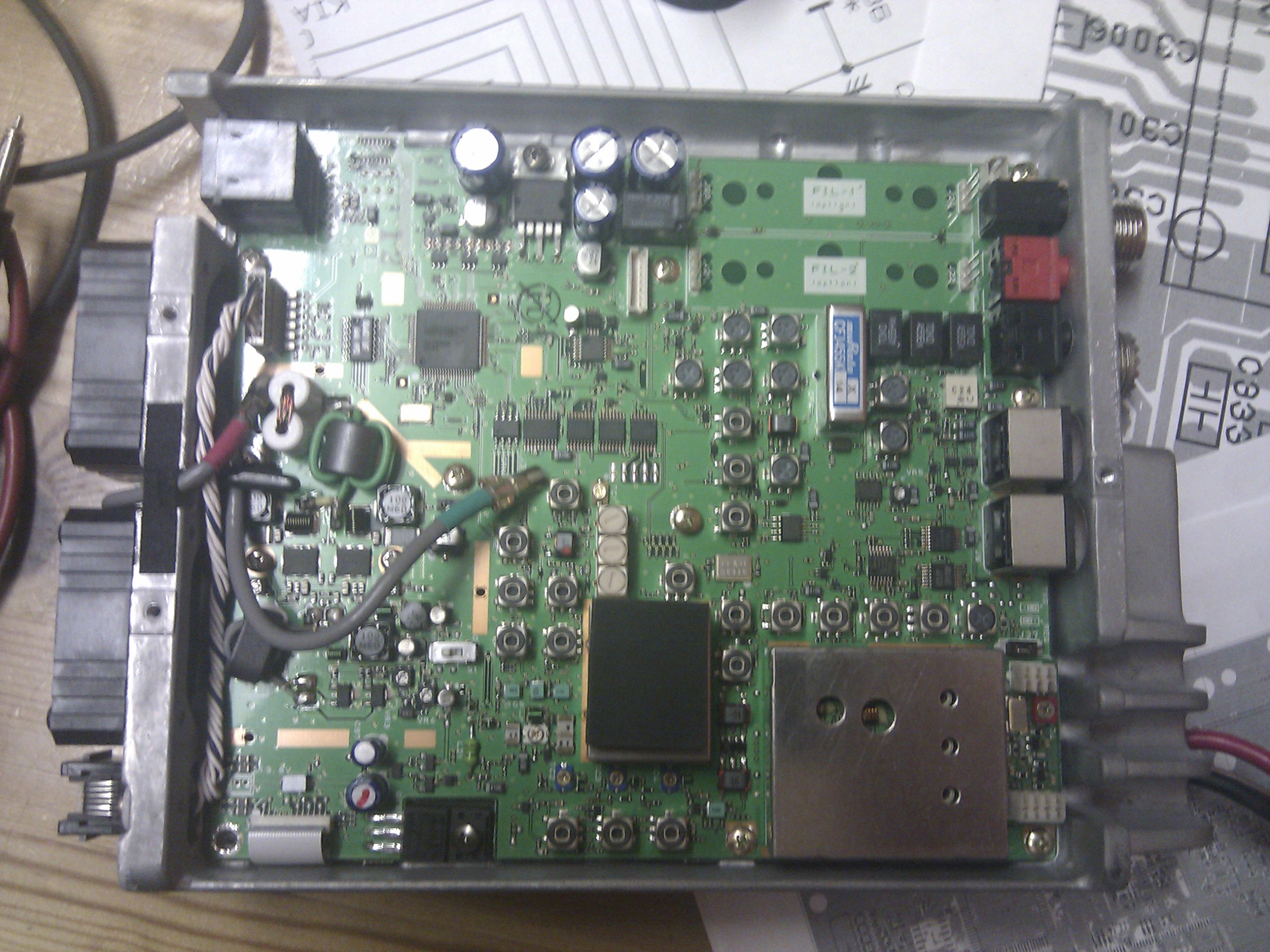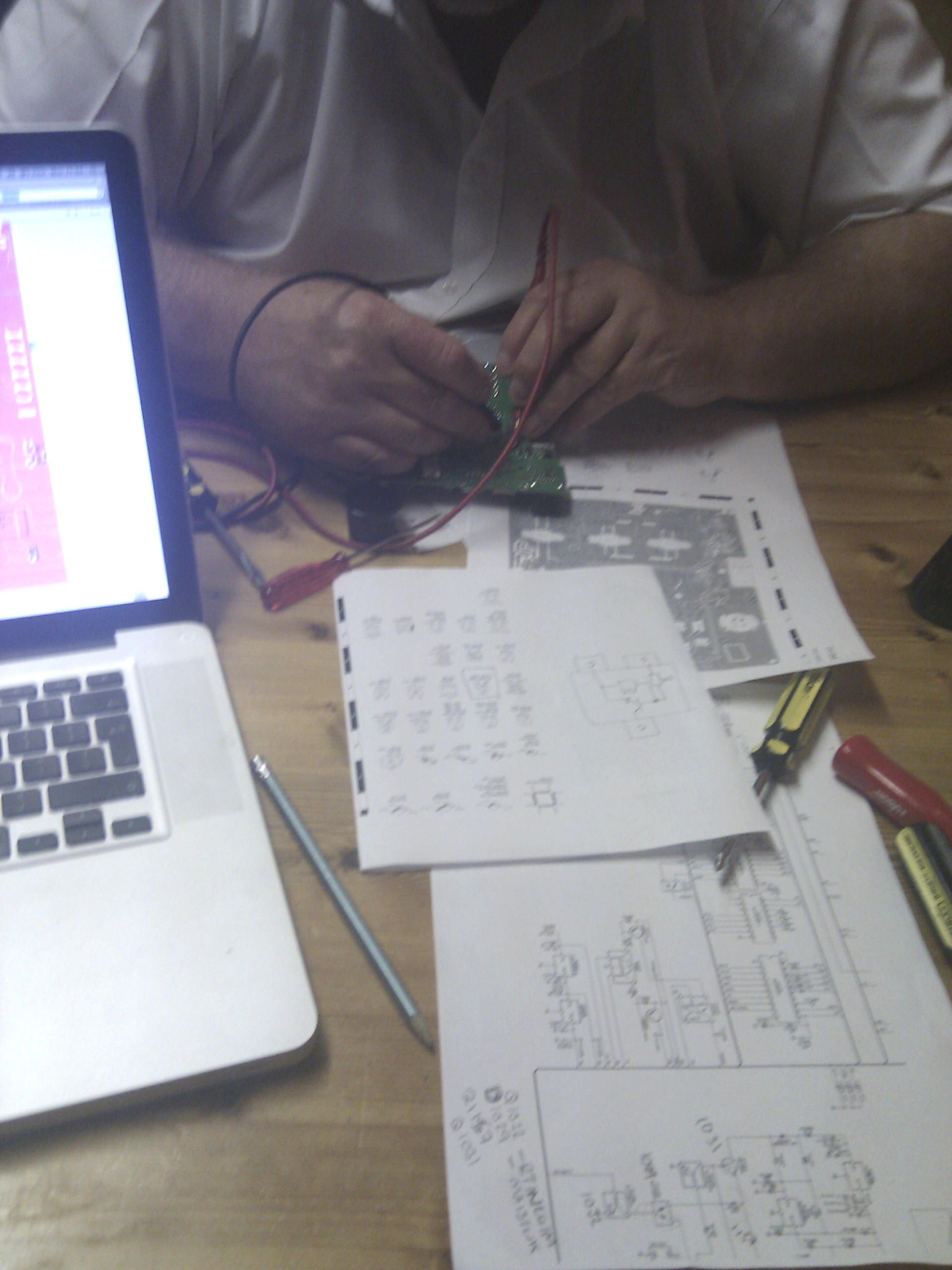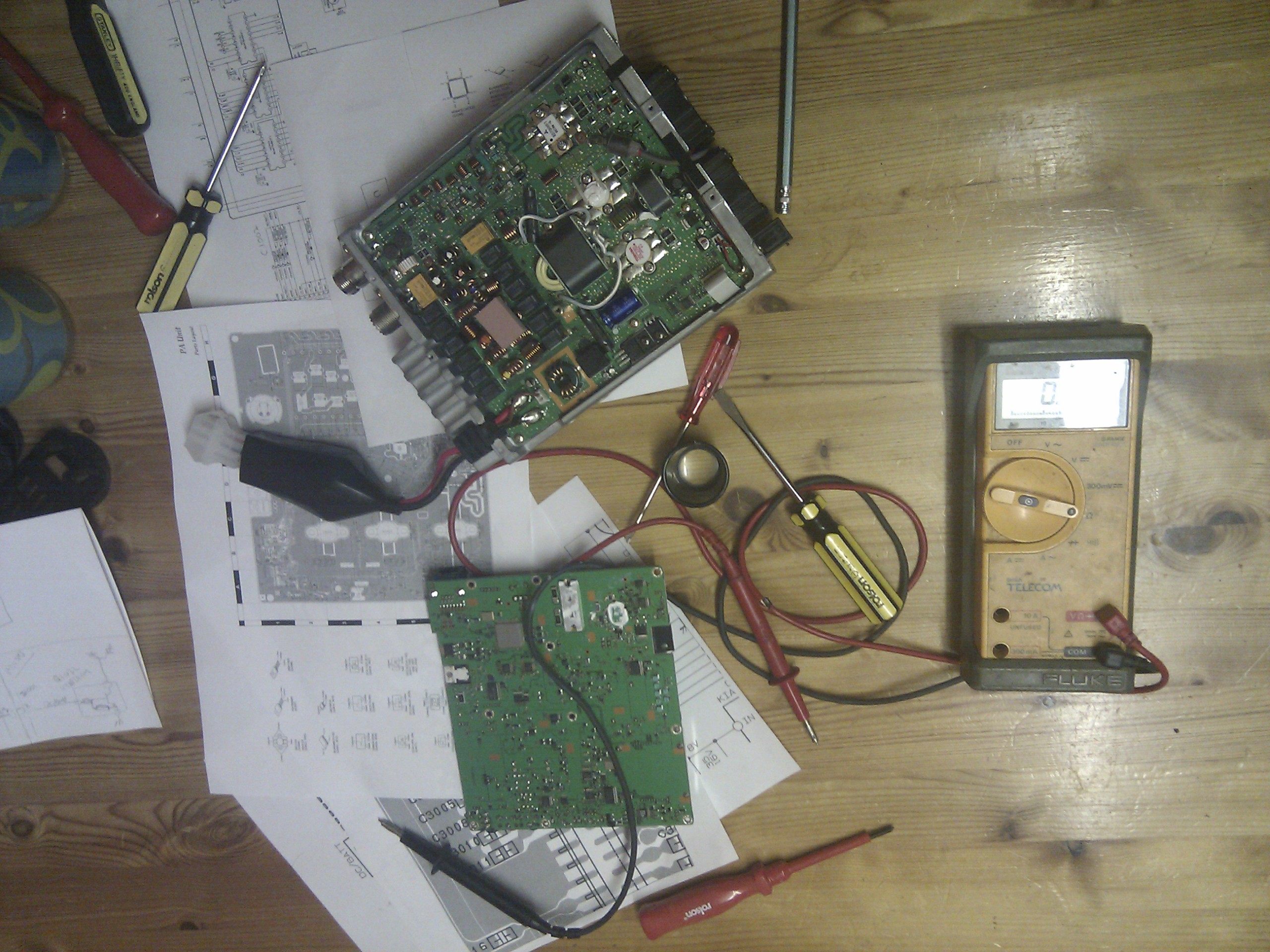The image above is Yaesu’s promotion image the FT-857D. It is essentially a larger version of the FT-817ND. 100 watts on HF, 50 watts on VHF and 20 watts on UHF. It is a good all-rounder radio. I have not met anyone who had used mine (or owns one) that was not impressed with it in it’s time. My only fault is that the internal speaker is a little too tinny, but carrying an external speaker (I have a small Nokia speaker).
Sense Wire Failure
About a month or two after owning the radio (I bought it second hand), it developed a fault. No matter what I did, I could not get more than 20 watts out of the radio. After some hunting about, I emailed Yaesu technical support who informed me that it was probably the battery sensing wire. You can see the battery sense symbol next to the voltage on the top right of the main screen. This symbol is in contrast to the usual ‘V’ displayed (see the image above).
I explained that I was an Electrical Engineer, and the Yaesu Engineer encouraged me to look at the radio myself, and save the repair fees. I decided I would peer inside and see, and if it was too stressful (as in, SMT components) I would send it Yaesu.
Anyway. After Yaesu sent me the schematic, I started from the sense wire on the DC power connector, and worked my way into the radio, towards the microprocessor, trying to figure out where the signal was getting corrupted. On the under-side of the main circuit board, there is a small transistor: Q1032 in fact. It had blown. It is a digital transistor (i.e. it has biasing internally to work from 5V logic). However, it measured more akin to a capacitor! After explaining my findings to Yaesu, they confirmed my suspicion in that Q1032 was faulty. Yaesu sent me two new transistors for free as a good will gesture, which I was very impressed with.
Working on the radio is an experience. You can see the two transistors in the image above, in the plastic bag. The two black dots on the right.
Just it you’ve wondered, here’s what the inside of the radio looks like:

